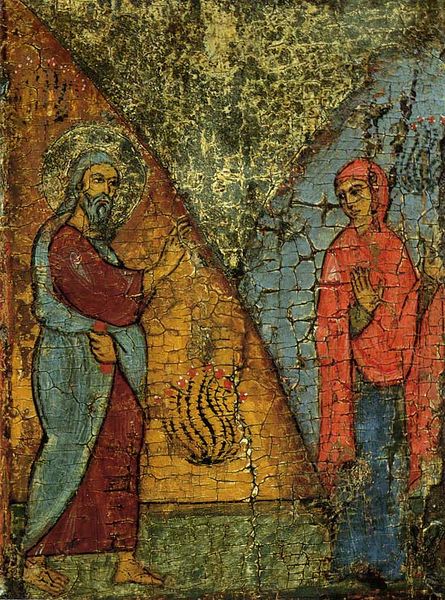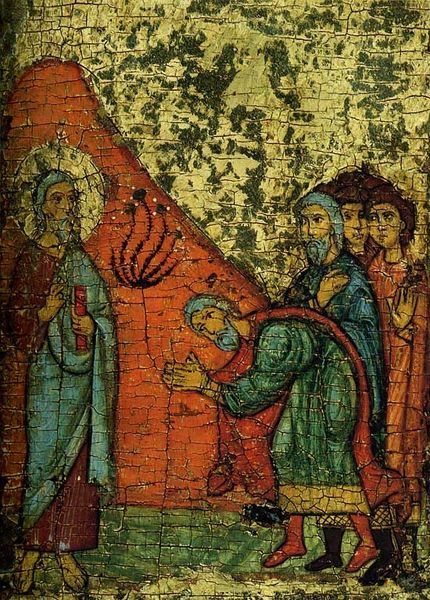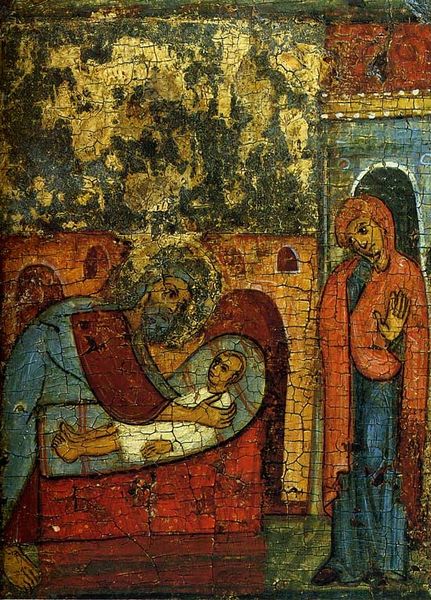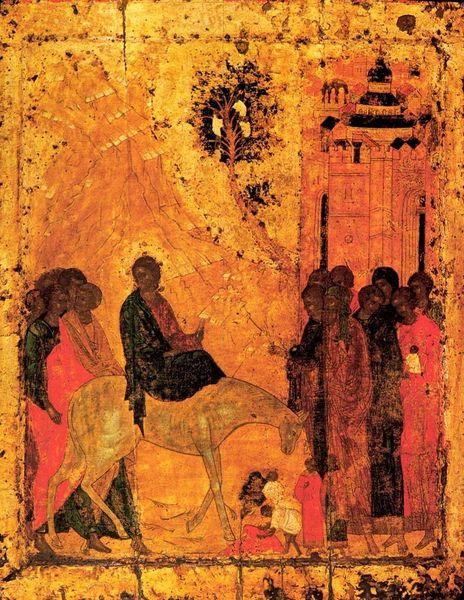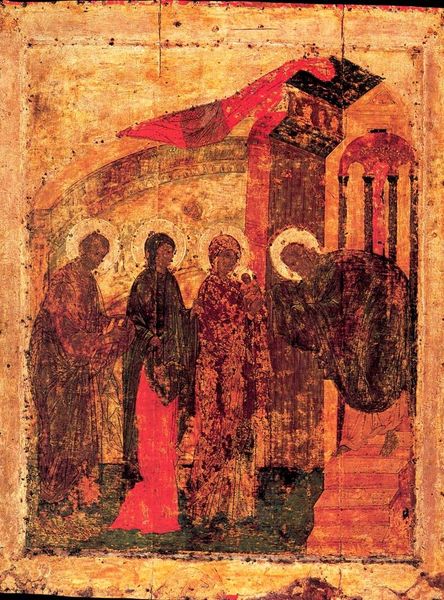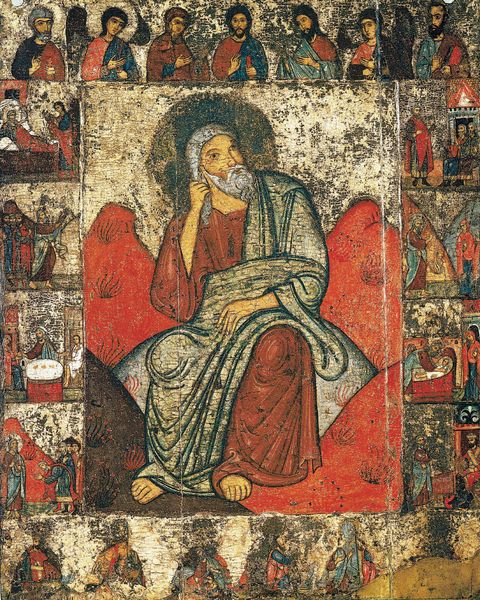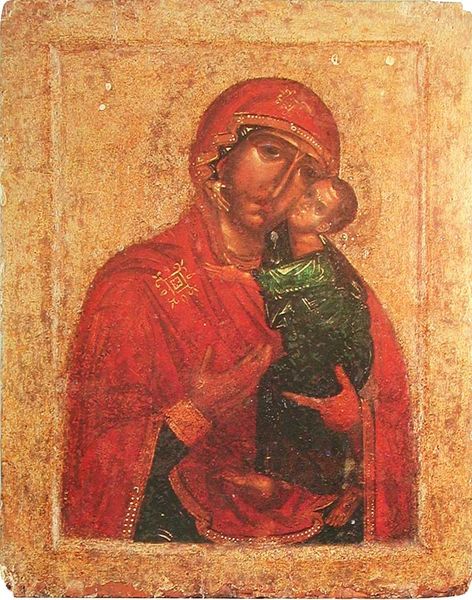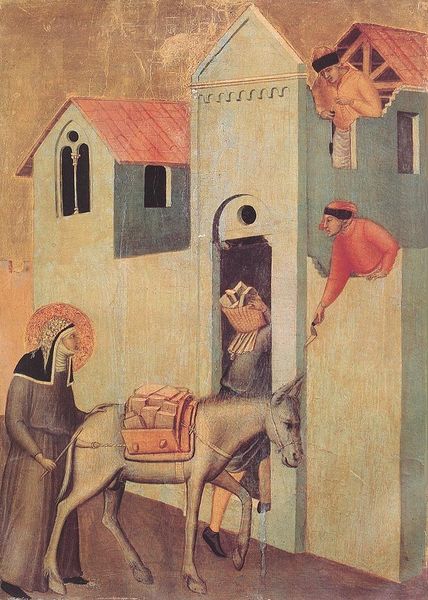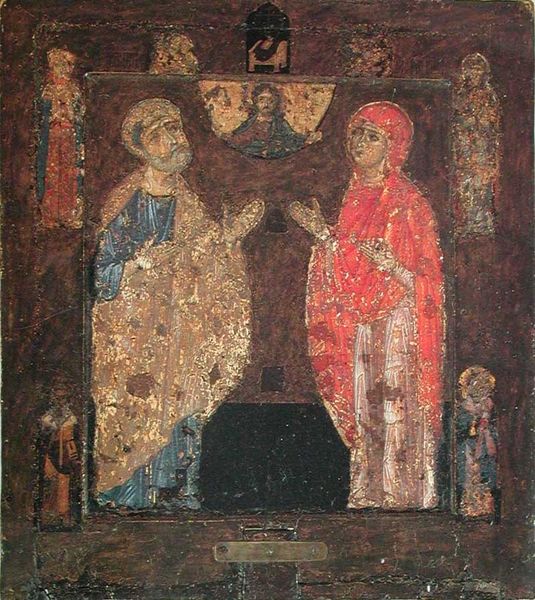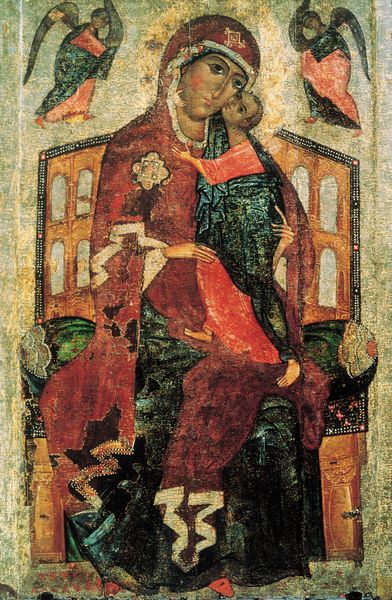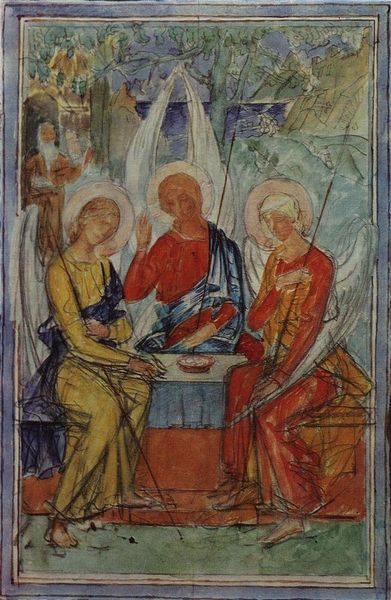
Elijah In The Widow's House Multiplies Bread (from Hagiographic cycle of detail of 'Prophet Elijah in the desert' ) 1325
0:00
0:00
tempera, painting
#
byzantine-art
#
medieval
#
narrative-art
#
tempera
#
painting
#
figuration
#
handmade artwork painting
#
mixed media
Copyright: Orthodox Icons,Fair Use
Editor: Here we have a tempera painting entitled "Elijah In The Widow's House Multiplies Bread", dating back to 1325. It's part of a larger hagiographic cycle and is currently housed in the Tretyakov Gallery in Moscow. The cracks across the surface give it such a distinct look! What's your take on how the composition informs our reading of the narrative? Curator: The linear, almost geometric, structure segments the composition into distinct spatial planes. Notice how the flatness of the background contrasts with the implied volume of the table and the figures, yet remains unified with its similar grid pattern and coloration. Editor: I do see that... the background almost seems like an aged, crumbling wall. And the three figures, each so still. Is there a reason for their specific placement and relative scale? Curator: Indeed. The figures are arranged in a deliberately hierarchical manner. Elijah, distinguished by his halo, is centrally positioned and his gesture— extending his hand—creates a strong directional line. Observe the repetition of the red pigment across all the subjects; these lines and colour-relations unify an otherwise partitioned frame, drawing the eye through each staged segment. Editor: That's fascinating, seeing the relationships established through color and line...It really encourages one to view it as more than just a depiction. More of a… system? Curator: Precisely. The medium itself– tempera–with its fast-drying and opaque nature lends itself to such precise layering. The very physicality of its layered structure can further enhance our reading; What looks as "crackling with age", can be read as an integral element, building towards meaning. Editor: It really brings to light how every material and compositional decision contributes to the whole. Thanks, this has reshaped my understanding of icons completely. Curator: And for me, this opportunity highlights again how crucial observation of details can reveal subtle underlying visual relationships that construct profound cultural significance.
Comments
No comments
Be the first to comment and join the conversation on the ultimate creative platform.
